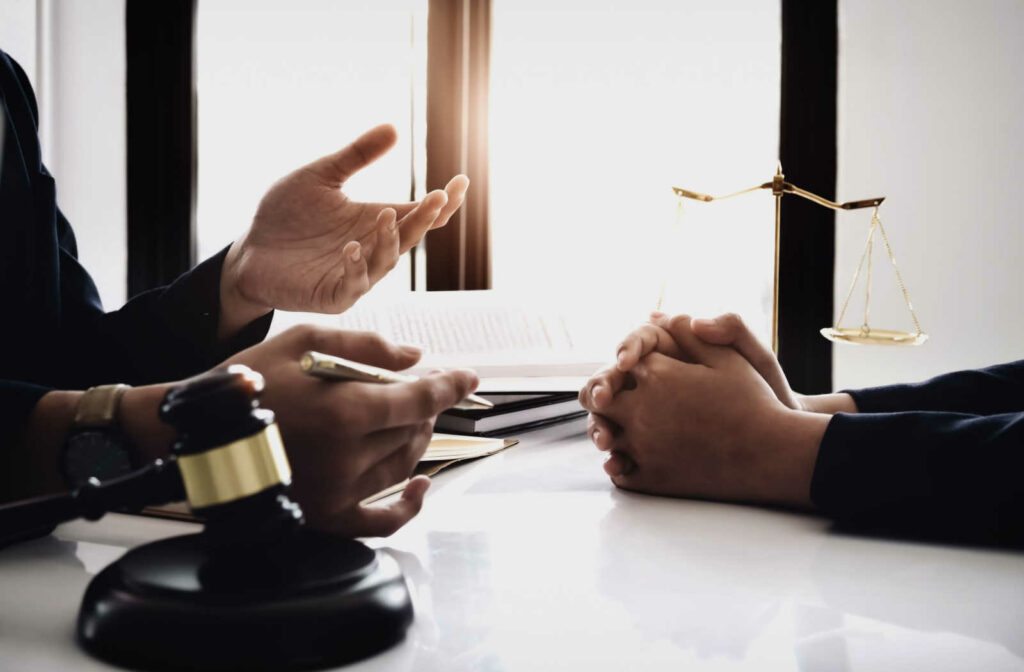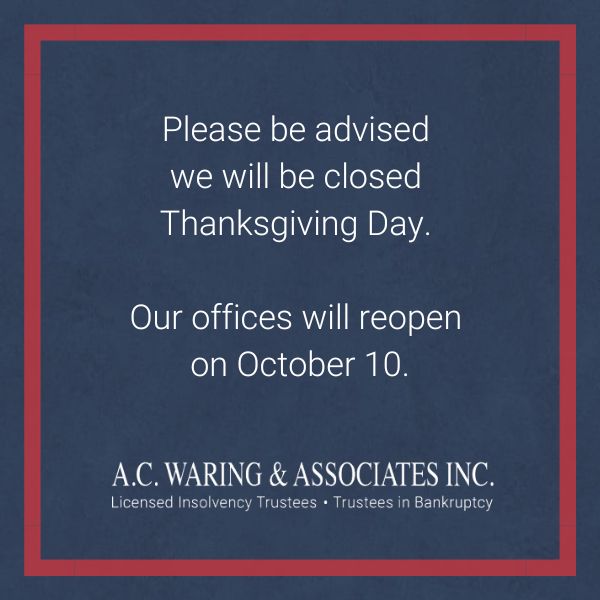Sometimes it is necessary to file for bankruptcy so knowing what to expect from the process can help make the situation much more manageable. It’s also important to note that bankruptcy isn’t the end of your financial well-being. In fact, it will probably help improve your financial security in the short run.
So, let’s take a look at the bankruptcy process, what steps you can expect to take, and how long the process will be so that if you find yourself facing financial difficulties, you’ll know what you’ll need to do to help get your head above water.
However, before you make any final decisions, it’s always important to get the advice of a professional. At A.C. Waring & Associates, Inc., we’re ready to help you take a closer look at your finances and develop a strategy that satisfies you, your family, and your creditors. Contact us today, or check out Our Solutions page for more information on the services we provide.
What Is Bankruptcy?
Before we look into the process, let’s take a moment to review what bankruptcy is and how it can help you.
Bankruptcy can eliminate various debts, effectively giving you a fresh start on your finances. However, bankruptcy isn’t without consequences. One could easily compare bankruptcy like filing for a ‘financial divorce” from your creditors. In fact, the Bankruptcy and Insolvency Act and the Divorce Act are both federal statutes and share some common themes.
If you file for bankruptcy, you’ll work with a Licensed Insolvency Trustee (LIT) to compile a list of assets. Most personal assets are usually exempt from the proceedings. Your credit report will also have a bankruptcy notification lasting up to 7 years (or longer if it isn’t your first bankruptcy). You can contact a Licensed Insolvency Trustee directly. No referral is needed.
At the end of the process, bankruptcy will extinguish most of your unsecured debts, allowing you to start rebuilding your finances without worrying about your creditors garnishing your wages or suing you.
The Bankruptcy Process
Now that we’ve got an overview of what bankruptcy is, let’s look at each step in the process. It’s important to remember that even though bankruptcy is designed to help you take control of your finances, it might not always be the best choice.
Aside from bankruptcy, you could speak to your LIT about:
If your LIT recommends bankruptcy, you can expect the following process:
Filing for Bankruptcy
Your LIT will prepare various forms for you to sign and file them with the Office of the Superintendent of Bankruptcy on your behalf. From this point on, your LIT will work directly with your creditors, and the following will happen:
- You will stop making payments to unsecured creditors
- All wage garnishments will stop
- Most lawsuits from creditors will cease
Your LIT will notify all of your creditors, and you will move forward with the next steps in the process.
Non-Exempt Assets
Asset, not considered exempt under provincial law, may have to be liquidated or re-purchased from your bankrupt estate. In this case your creditors may receive a dividend from the estate.
Exempt Assets Include:
- Food and clothing for you and your family
- Furniture and appliances up to $4,000
- One vehicle up to $5,000
- Any and all medical and dental aids
- RRSP’s, RESP’s, and pensions
- Some life insurance policies
A Stay of Proceedings
The filing of a bankruptcy acts as a ‘Stay of Proceedings’ and has the effect of stopping litigation
- You’ll need to attend 2 financial counselling sessions
- You may need to make “surplus payments” if your surplus income is more than $200 a month.
Surplus income is income you make on top of the income you use to maintain your standard of living. If you make more than $200 a month in additional income, you may need to pay 50% of that amount every month until you’re discharged from bankruptcy. The higher your surplus income is, the longer it may take before you’re discharged.
If this is your first filing, the bankruptcy process generally takes 9 to 21 months. If it is your second or third filing, the process can take up to 24 months or even longer.
What Debts Aren’t Discharged?
Bankruptcy can help eliminate unsecured debts like credit card balances and payday loans, but it will not help wipe away debts like:
- Mortgages (unless you abandon the mortgaged property)
- Student loans (unless you have been out of school for seven years)
- Fraudulent Debts
- Child support
- Alimony
If you’ve co-signed a loan with another person, the co-signer will be responsible for the rest of the loan.
If you cannot pay these debts, you’ll need to speak with your LIT to get help strategizing the best way to move forward. Every situation is different, so you and your LIT will need to spend some time deciding the right course of action before you choose bankruptcy.
Make the Right Financial Decision Today
Bankruptcy is a process that can be complicated and confusing, but we can help you navigate the waters of financial insecurity when you book an appointment. Let our knowledgeable financial team look at your situation and uncover a strategy that is best for you, your family, and your creditors. Call us today!





